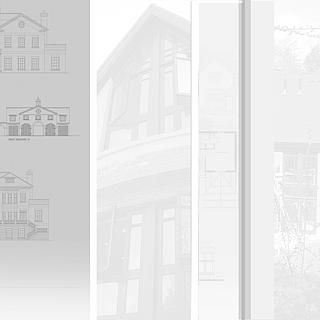Top Architectural Trends Transforming Modern Spaces
- Glenn Cavill
- Sep 29
- 4 min read
In today’s world, architecture is evolving faster than ever. Modern spaces are no longer just about shelter; they are about creating environments that inspire, comfort, and connect us with nature and technology. I’ve noticed some exciting shifts in how architects and designers approach their work. These changes are shaping the way we live, work, and interact with our surroundings. Let’s explore some of the top architectural trends transforming modern spaces and how you can embrace them in your own projects or homes.
Embracing Sustainability in Modern Design Trends
Sustainability is no longer a buzzword; it’s a necessity. Modern design trends focus heavily on reducing environmental impact while enhancing the quality of life. This means using eco-friendly materials, energy-efficient systems, and designs that work with nature rather than against it.
For example, many new buildings incorporate solar panels, green roofs, and rainwater harvesting systems. These features not only reduce utility costs but also help conserve resources. Inside, you’ll find natural materials like bamboo, reclaimed wood, and low-VOC paints becoming popular choices.
If you’re thinking about a renovation or new build, consider:
Installing large windows to maximise natural light and reduce electricity use.
Using insulation materials that improve energy efficiency.
Choosing plants and landscaping that require minimal water.
These steps make a big difference and align with the growing demand for responsible architecture.

How Modern Design Trends Are Shaping Interior Spaces
Interior spaces are becoming more flexible and user-friendly. The days of rigid room layouts are fading. Instead, open-plan designs with multifunctional areas are taking centre stage. This approach makes homes and offices feel larger and more inviting.
One trend I find particularly interesting is the integration of biophilic design. This means bringing nature indoors through plants, natural light, and organic shapes. It’s proven to reduce stress and boost creativity.
Here are some practical ideas to try:
Use sliding or folding doors to create adaptable spaces.
Incorporate indoor gardens or green walls.
Choose furniture that can serve multiple purposes, like a sofa bed or extendable dining table.
These changes make spaces more enjoyable and adaptable to different needs.

The Rise of Smart Homes and Technology Integration
Technology is transforming how we interact with our living spaces. Smart homes are no longer futuristic concepts; they are becoming standard in modern architecture. From lighting and heating to security and entertainment, technology offers convenience and efficiency.
Smart systems can learn your habits and adjust settings automatically. For example, smart thermostats reduce energy waste by heating or cooling rooms only when needed. Voice-activated assistants control lights, music, and appliances without lifting a finger.
If you want to modernise your home, consider:
Installing smart lighting that adjusts based on time of day.
Using automated blinds to control sunlight and privacy.
Integrating security cameras and alarms that you can monitor remotely.
These upgrades not only improve comfort but also add value to your property.

Minimalism and Clean Lines: A Timeless Appeal
Minimalism continues to dominate modern design trends. Clean lines, uncluttered spaces, and simple colour palettes create a sense of calm and order. This style is perfect for those who want their homes to feel spacious and serene.
To achieve this look:
Choose furniture with sleek, simple shapes.
Limit decorative items to a few meaningful pieces.
Use neutral colours like white, grey, and beige, with occasional bold accents.
Minimalism also encourages quality over quantity. Investing in well-made pieces that last longer is better for both your wallet and the environment.
The Importance of Outdoor Living Spaces
Modern architecture increasingly blurs the line between indoors and outdoors. Outdoor living spaces are becoming essential parts of home design. Patios, decks, and gardens extend your living area and provide a place to relax and entertain.
Designing these spaces with comfort and style in mind is key. Think about:
Comfortable seating with weather-resistant materials.
Outdoor kitchens or fire pits for social gatherings.
Lighting that creates a warm, inviting atmosphere after dark.
By enhancing your outdoor areas, you create a seamless flow that connects you with nature and improves your overall living experience.
Exploring More Architectural Design Trends
If you want to dive deeper into the latest architectural design trends, there are plenty of resources and expert insights available. Staying informed helps you make better decisions whether you’re building, renovating, or simply dreaming about your ideal space.
Remember, the best designs are those that reflect your lifestyle and values. Don’t be afraid to mix trends with your personal touch to create a space that truly feels like home.
Bringing It All Together in Your Space
Modern design trends offer exciting opportunities to transform your environment. Whether it’s through sustainability, technology, minimalism, or outdoor living, these ideas can help you create spaces that are beautiful, functional, and future-ready.
Start small by incorporating one or two elements that resonate with you. Over time, you’ll see how these changes improve your daily life and connect you more deeply with your surroundings.
Architecture is about more than buildings - it’s about shaping experiences. Embrace these trends and watch your space come alive in new and inspiring ways.








Comments